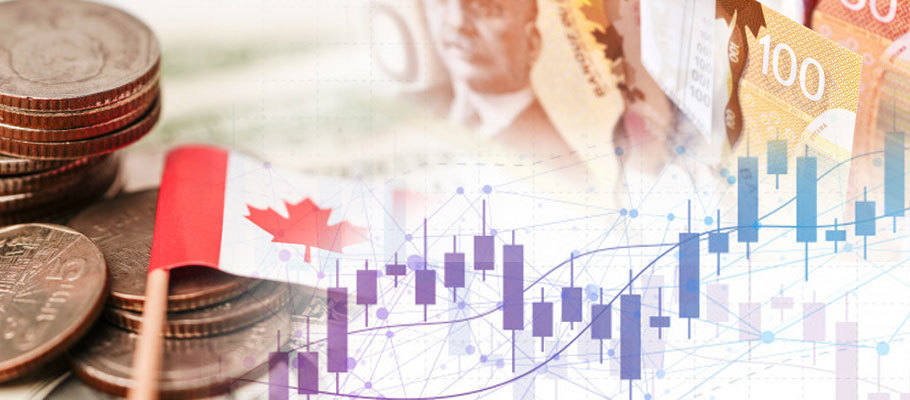
Published: August 9th, 2020
The Canadian dollar rode into a five-day high against its southern currency cousin this week, as prospects for additional US economic stimulus gave oil prices a much-needed shot in the arm. The loonie also got a boost from PMI data indicating growth in the Canadian manufacturing sector – the first such upswing seen in over five months.
The dollar (CAD) was trading 0.29 per cent higher against the greenback, reaching an intraday level of 1.3342.
Commodities across the board rallied this week, and currencies like the Canadian and Australian dollars typically get a boost whenever this happens.
The Canuck dollar is a commodity currency, with a significant proportion of the country’s economy based on resource extraction. It also produces a lot of gold which inched-up to a record high north of $2,000 oz. Oil is another major export, and CAD is benefiting from a general upswing this week in oil price sentiment.
American crude oil futures started the week 1.69 per cent higher at $41.69 a barrel, pushed on expectations that the White House and policymakers in the US Congress are approaching agreement on a new economic stimulus package, as well as emerging signs that the country could finally be making progress in its faltering effort to halt the spread of COVID-19.
Analysts at The Bank of Nova Scotia said in a note investors that the commodity market is ‘telegraphing a lot of positivity at the moment’.
PMI data via the Ivey Purchasing Managers Index moved up to 52.89 in July from the previous month (seasonally adjusted). The last time Canadian PMI figure showed an uptick was in February when it last crossed the critical 50 threshold that indicates the sector is in expansion mode.
July’s PMI was the highest reading seen since January 2019. In April, when efforts to contain the pandemic shuttered business activity across the country, PMI dipped to a record low of 22.78.
Since March, however, the Canadian dollar has bounced back by nearly 10 per cent. Its forward surge this week on came as the greenback lost ground against a basket of major currencies. July was seen as the worst month in over a decade for the US dollar.
The news carried over to Canadian government bond yields, which eased across a broadly flatter curve this week. Ten-year bonds were down by three basis points, after touching their lowest intraday level since March the previous Friday.
Back in April, the loonie was under sustained pressure from sinking commodity prices, particularly oil, when the pandemic hammered economic output in countries reliant on raw material extraction.
CAD did as it usually does in a downturn. It tracked slumping oil prices, which were being pushed down by shrinking demand and ongoing concerns about wrangling between OPEC members in the size of production cuts needed to balance lower demand.
The Canadian dollar did see some support at its lowest points thanks to the US Federal Reserve’s $2.3 trillion (USD) stimulus package, which was designed to cushion the economic damage caused by coronavirus lockdowns. That was broadly seen as weakening the US dollar, and as such, the greenback’s loss might have been the loonie’s gain.
However, any positive knock-on impact from the Fed’s cash injection was dulled by news of rising Canadian joblessness, which spiked from a low of 5.49 per cent in February to 7.6 per cent in March. Central bank economists warned at the time that Canada’s labour market could contract further.
In May CAD entered strange new territory, holding firrm against USD even as oil prices sank to a historic low. Crude oil futures briefly ‘went negative’ – which had never happened previously.
Even as other economies with heavy oil dependence sank – the Mexican peso plunged 5.5 per cent while the Norwegian Krone lost more than 3 per cent – CAD held onto its value, dropping just 0.69 per cent against the greenback.
The loonie’s relative stability stood in sharp contrast to the plunge in West Texas Intermediate futures that took place in the same period – coming back from losses touching -$40 a barrel at one stage that sparked a mini-panic in commodity markets.
Before the break, the Canadian dollar had been in-sync with crude oil prices for most of the previous decade. Everything changed, however, when the coronavirus pandemic landed, and the global economy ground to a halt. Demand for crude evaporated overnight – even as a battle for market share was brewing between Russia and Saudi Arabia.
The oil-loonie link became even more unreliable in the aftermath, detaching further as reports of a storage capacity crunch and growing global glut saw investors ditch front-month oil futures contracts en masse.
Analysts had several theories as to why the currency indicator’s reliability might have broken down. Some said investors had seen the oil price drop coming and had already priced-in less demand for oil.
Others thought investors were more focused on long-term indicators, watching Canada’s high levels of consumer debt levels, for example, combined with a property bubble in tight urban markets like Toronto and Vancouver that could trigger a recession – a much bigger worry than short-term commodity price volatility.
Currency analysts at RBC in Toronto wrote that the loonie’s performance would be influenced more by the fallout from pandemic lockdowns than any change in crude oil future prices. Traders, they said, were prepared for a short-sharp drop in crude’s pricing and were thus unfazed by the dip into negative.
With PMI numbers improving and the country widely seen as responding effectively to the outbreak, eyes will likely turn back to Canadian oil producers, forestry firms and mining companies during the Autumn earning report season.